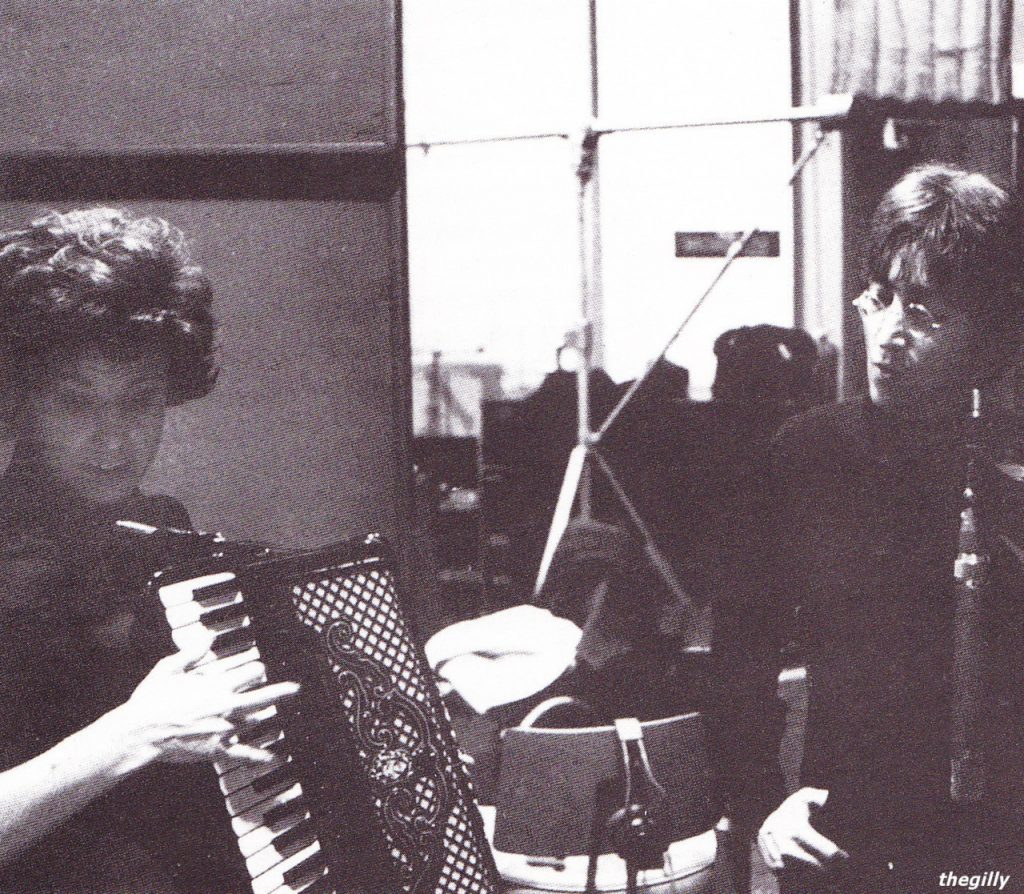Mixing "It's All Too Much", "Blue Jay Way"
This image is a cover of an audio recording, and the copyright for it is most likely owned by either the publisher of the work or the artist(s) which produced the recording or cover artwork in question. It is believed that the use of low-resolution images of such covers qualifies as fair use.
- Album Songs recorded during this session officially appear on the Magical Mystery Tour (US LP - Mono) LP.
- Studio:
- EMI Studios, Studio Three, Abbey Road
- Studio:
- De Lane Lea Music Recording Studios, London, UK
Songs recorded
1.
2.
3.
4.
5.
6.
7.
8.
9.
10.
11.
12.
13.
14.
15.
16.
17.
18.
19.
20.
Tape copying • Tape reduction take 8 into take 9
21.
Tape copying • Tape reduction take 8 into take 10
22.
23.
24.
25.
26.
27.
28.
29.
30.
Staff
Musicians on "Shirley's Wild Accordion"
Production staff
- John Lennon:
- Producer
- George Martin:
- Producer
- Ken Scott:
- Engineer
- Richard Lush:
- Second Engineer
- Dave Siddle:
- Engineer
- Mike Weighell:
- Second engineer
About
On this day, The Beatles had two recording sessions, the first one at De Lane Lea studios and the second one at EMI Studios.
The recording of “It’s All Too Much,” a George Harrison-penned track intended for the “Yellow Submarine” film soundtrack, occurred in the De Lane Lea studios in London on May 25, May 31, and June 2, 1967.
On this day, the same engineering team, comprising producer George Martin, engineer Dave Siddle, and second engineer Mike Weighell, convened at the De Lane Lea studios from 2:30 pm to 8 pm to mix the track. They generated one mono mix from Take 2 (designated as RM1 and lasting 8:15) and one stereo mix (designated as RS1 and lasting 6:22), although neither mix was ultimately released.
The song was eventually completed over a year later, on October 16, 1968.
The second session took place at EMI Studios from 6:30 pm to 2 am. As it overlapped with the earlier session, George Martin couldn’t join. This was the first time that John Lennon was credited as a producer for a Beatles session.
On September 6, 1967, The Beatles recorded the basic track of “Blue Jay Way,” which was George Harrison’s contribution to the “Magical Mystery Tour” soundtrack. The following day, on September 7, the band overdubbed lead vocals and backing vocals. The final overdubs for the track were added on October 6, completing the recording of the track.
On this day, engineers Ken Scott and Richard Lush worked on the mono mix of “Blue Jay Way“. They created eight mixes from Take 3, numbered RM2 to RM9, featuring artificial double tracking (ADT) applied to George Harrison’s vocals. The team then worked on an edit of RM6 and RM9, but the final mono mix was not completed until November 7, 1967, along with the stereo mix.
After completing work on “Blue Jay Way,” the band moved on to create some incidental music known as “Shirley’s Wild Accordion,” which remained unreleased until its inclusion on the 2012 reissue of the “Magical Mystery Tour” TV special.
“Shirley’s Wild Accordion” was written by John Lennon and Paul McCartney. The track featured Shirley Evans on accordion, accompanied by her musical partner and then-husband Reg Wale on percussion. Paul played maracas and cheered on Evans with shouts of “Go on, Shirl!” while Ringo Starr played drums.
The recording of the track, which was initially named “Accordion (Wild),” was made in eight basic takes with Shirley Evans playing from a score created by Mike Leander from ideas by John and Paul. Two reduction mixes were then made, numbered 9 and 10, followed by overdubs. The recording was completed with five additional takes, numbered 11-15.
Three mono mixes of “Shirley’s Wild Accordion” were created, numbered RM1 to RM3, and taken from takes 10, 7, and 14, respectively. The second mix was subtitled “Waltz,” and the third was known as “Freaky Rock.” The session ended at 2 am on the morning of October 13, 1967.
Although the drums and maracas were excluded, the mix of “Shirley’s Wild Accordion” included in the bonus material of the 2012 reissue of the “Magical Mystery Tour” film kept various other percussive sounds. The track was initially cut from the final edit of the film and remained unreleased until the reissue.

Last updated on May 7, 2023